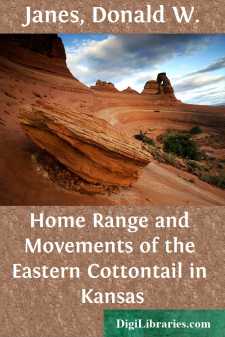Categories
- Antiques & Collectibles 13
- Architecture 36
- Art 48
- Bibles 22
- Biography & Autobiography 813
- Body, Mind & Spirit 142
- Business & Economics 28
- Children's Books 15
- Children's Fiction 12
- Computers 4
- Cooking 94
- Crafts & Hobbies 4
- Drama 346
- Education 46
- Family & Relationships 57
- Fiction 11828
- Games 19
- Gardening 17
- Health & Fitness 34
- History 1377
- House & Home 1
- Humor 147
- Juvenile Fiction 1873
- Juvenile Nonfiction 202
- Language Arts & Disciplines 88
- Law 16
- Literary Collections 686
- Literary Criticism 179
- Mathematics 13
- Medical 41
- Music 40
- Nature 179
- Non-Classifiable 1768
- Performing Arts 7
- Periodicals 1453
- Philosophy 64
- Photography 2
- Poetry 896
- Political Science 203
- Psychology 42
- Reference 154
- Religion 513
- Science 126
- Self-Help 84
- Social Science 81
- Sports & Recreation 34
- Study Aids 3
- Technology & Engineering 59
- Transportation 23
- Travel 463
- True Crime 29
Home Range and Movements of the Eastern Cottontail in Kansas
by: Donald W. Janes
Categories:
Description:
Excerpt
A knowledge of the home range and movements of the cottontail (Sylvilagus floridanus) is one of the most important prerequisites for estimating effectively its numbers and managing its populations. By comparing results obtained from different methods, previously used, for determining the size of the home range I have attempted to develop a more valid procedure.
The study here reported upon was made on the University of Kansas Natural History Reservation (Sec. 4, T. 12S, R. 20E), the northeasternmost section of Douglas County, Kansas, approximately 6½ miles north-northeast of the University campus at Lawrence. The 590-acre reservation, situated in the ecotone between the eastern deciduous forests and the prairie of the Great Plains near the north edge of the Kansas River Valley, has been protected as a "natural area" since 1948 (Fitch, 1952). It consists of tree-covered slopes, and flat grass-covered hilltops and valleys. Two limestone outcrops follow the contours about five and 20 feet below the tops of the hills.
The 90-acre study area consists of a valley bordered on the north by a wooded slope and on the southeast by another wooded slope adjacent to a narrow hilltop, east of which is another wooded slope. The area is thus an alternating series of three wooded slopes and two grass-covered, relatively level areas.
The wooded slopes rise from the valley for about 125 feet at a grade of approximately 16 per cent. There is a sharp increase in grade to 36 per cent 100 feet below the top of the hills. A natural terrace 50 feet to 100 feet wide parallels the hilltop at the base of the 36 per cent incline.
The vegetation of the northwest-facing wooded slopes has been described by Packard (1956). It consists of American elm (Ulmus americana), shagbark hickory (Carya ovata), chestnut oak (Quercus muehlenbergii), black oak (Quercus velutina), and black walnut (Juglans nigra), in that order of dominance. Honey locust (Gleditsia triacanthos) and hackberry (Celtis occidentalis) are also present. Shrubs and herbs of the lower story include greenbriar (Smilax hispida), wild grape (Vitis vulpina), Virginia creeper (Parthenocissus quinquefolia), coralberry (Symphoricarpos orbiculatus), gooseberry (Ribes missouriense), bluegrass (Poa pratensis), sedges (Carex sp.), poison ivy (Rhus radicans), and white snakeroot (Eupatorium rugosum).
The flat hilltops are covered by a mixture of grasses and forbs but are dominated by awnless brome (Bromus inermis). Foxtail (Setaria glauca), false redtop (Triodia flava), and panic grass (Panicum clandestinum) also occur commonly. Awnless brome is dominant in the valley (Pl. 46, fig. 1; Pl 47, fig. 2) except in the eastern end where bluegrass is dominant (Pl. 45).
Near the tops and bottoms of the slopes barbed wire fences separate the woodlands from the grasslands, which were grazed until 1948. The borderline between woods and grasslands is well defined but woody plants are rapidly encroaching into the grasslands. Young Osage orange (Maclura pomifera), American elm, and hackberry are common trees encroaching on the grasslands. The edge vegetation between woods and fields (Pls. 45 and 47) includes smooth sumac (Rhus glabra), coralberry and wild plum (Prunus americana). The lowland edges are characterized by blackberry (Rubus argutus), greenbriar and elderberry (Sambucus canadensis). Plates 45, 46 and 47 all show local habitat in situations where traps were actually operated....


